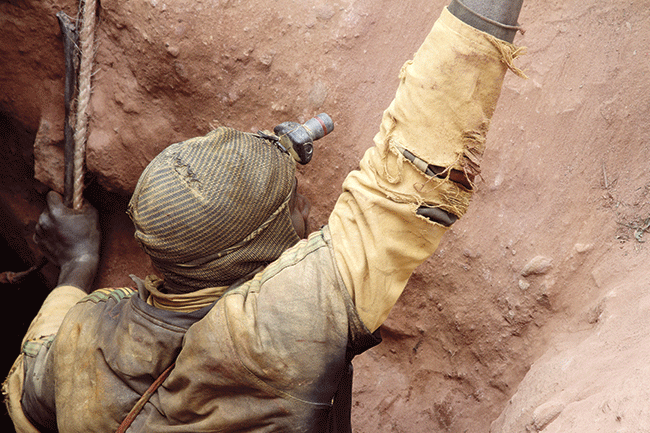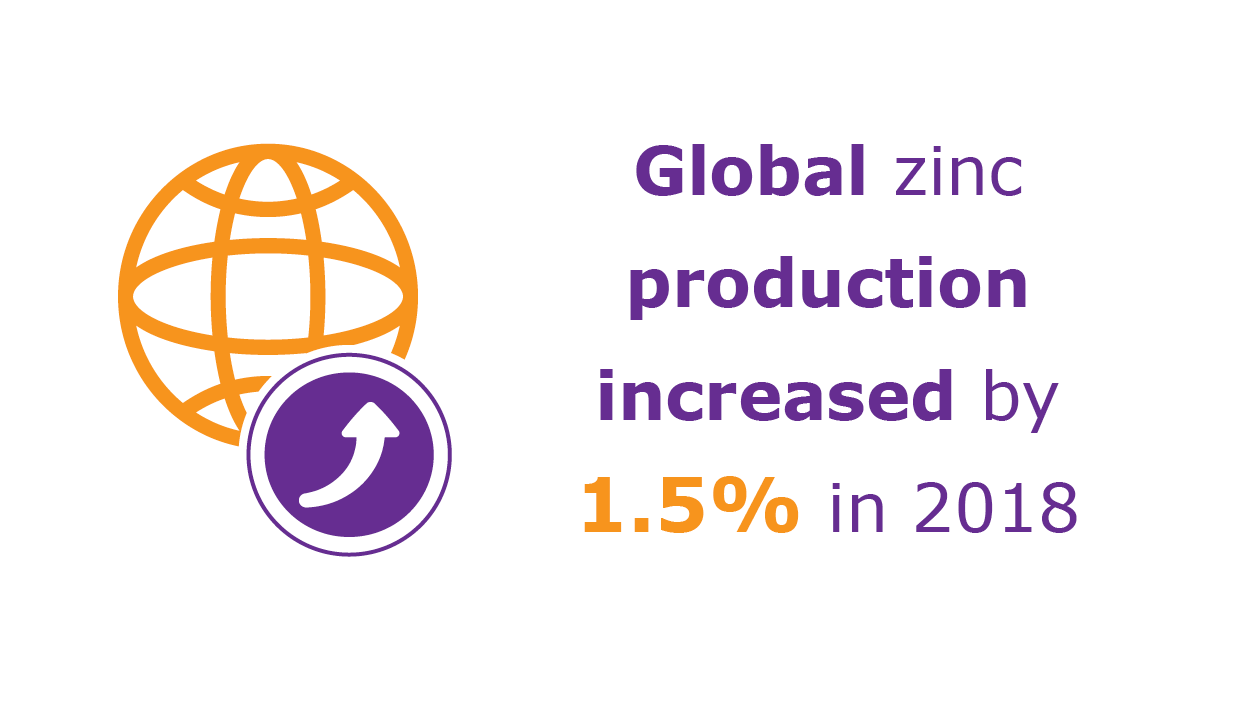In June, eight ‘illegal’ miners were found shot dead at the opening to a disused gold mine in South Africa’s Gauteng province, in what appears to have been an execution-style murder stemming from rivalry between illegal mining groups. In the same month, a further seven bodies were found in disused mines nearby. The killings followed earlier incidents in February, when 25 illegal miners were rescued after they had apparently been deliberately trapped underground by a rival faction. In Ghana, 17 people were killed during a landslide while mining illegally last April – one of several comparable incidents across the continent.
Illegal mining takes place in many African states – for diamonds in Angola, Zimbabwe, the DRC and Sierra Leone; for gold in South Africa, Tanzania and much of West Africa, and for tin, tantalite and rare earth elements in Central Africa. But as efforts to reduce illegal extraction are increasingly co-ordinated across African states, it is more important than ever to distinguish between illegal operators and legitimate small-scale mining groups. Without supporting and collaborating with the latter, it will likely prove impossible for governments to eradicate real illegal mining.
According to a 2013 report by the World Bank, there are now around 30 million small-scale and artisanal miners working around the world, supporting 100 million dependants – compared to around 7 million people employed in large-scale industrial mining. The bank’s sources indicate that approximately 15% to 20% of total global minerals and metals output comes from the small-scale sector, including 80% of world sapphire production, 20% of gold and around 20% of diamonds.
In Africa, it is estimated that small-scale mining employs 8 million people and supports 45 million others. Analysts at the South African Institute of International Affairs have observed that these numbers are increasing. In Ghana, for example, small-scale mining produced around 8% of the country’s gold output in 2000 – by 2010 the sector was producing around 23% of the national total.
Given the extent of small-scale mining, it is evident why there needs to be a careful distinction made between legal and illegal activities in the sector. As with industrial mining, the difference is often one of permits – having a current licence to mine a particular mineral in a certain place. Ironically, as a study in 2006 by Sadia Banchirigah, at the University of Manchester, has argued that the structural and regulatory reforms that enabled the expansion of formal mining in Africa from the 1980s – by reducing perceived risk and attracting foreign investment – also gave rise to factors that underpinned the growth in the illegal sector.
According to Banchirigah, these factors include ‘the unavailability of land for acquisition by small-scale miners, a result of large concessions being leased out to large-scale mining companies; the absence of transferable mineral rights, which prevents the acquisition of sections of concessions awarded to large-scale mining companies that prove unfeasible to work but are at the same time suitable for small-scale mining; and [ill-considered] attempts to formalise small-scale mining, which provide little incentive to operate within the legal domain, and therefore push more people into illegal, artisanal activity’.
While it is the knotty problem of permitting and land rights that underpins the chief distinction between legal and illegal mining, there are concerns specific to small-scale illegal activity that lie beyond the immediate issue of mining rights. These include safety risks to miners, which are heightened in the absence of legal oversight.
They also include serious risks to the environment and surrounding communities – notably through the use of mercury and other toxic substances in the amalgamation of gold from ore. Illegal mining can attract secondary crime to an area, in the form of prostitution and the black market sale of goods. Mining is sometimes run by organised crime syndicates or local warlords who have scant regard for front-line workers.
There is also lost revenue for African states. Earlier this year, South Africa’s former Mineral Resources Minister Susan Shabangu argued that illegal mining costs the country around ZAR6 billion a year. This lost revenue is increased when direct income from illegal mining does not flow to nationals of the country, as has sometimes been the case in Ghana. The Ghanaian government last year repatriated 4 500 Chinese nationals working as illegal gold miners, according to BBC reports.
In Africa, it is estimated that small-scale mining employs 8 million people and supports 45 million others
‘The impact of illegal mining is far-reaching, and extends well beyond those persons involved,’ says Warren Beech, head of the mining sector at Johannesburg-based law firm Hogan Lovells. ‘There are generally three types of illegal mining. Opportunistic “mining” – for example coal on dumps, which is accessed by commu-nities for fuel and small-scale sale mostly within the community and surrounds; syndicated full-scale illegal mining; and non-syndicated illegal mining. In my experience, the syndicated or organised illegal mining is predominant, particularly in respect of minerals that require processing and sale in an environment which is more regulated, such as gold.
‘In the organised group/syndicated scenario, the illegal miners are often from the surrounding communities, and it is these people that take the highest risk, not only of being caught, but of being killed,’ he says. ‘The required health and safety standards, procedures and equipment are simply not used or available. They are also the persons who benefit the least – the amounts paid to them are very low.’
While Beech foresees that illegal mining may continue to spread as the national economy remains sluggish, he argues that improved oversight and co-ordination may help contain it.
‘Going forward, all stakeholders in the industry, including the Department of Mineral Resources, would need to acknowledge the reality of illegal mining and form a special task group to regulate the illegal mining – by making provision for it and “policing” it effectively.’
Several initiatives are currently under way in a bid to increase the security and oversight of the small-scale mining sector – noting that small-scale mining is explicitly encouraged in the AU’s Africa Mining Vision 2050. Some are considered to have been effective in reducing the extent of illegal activity – often by formalising small-scale operations within a legal framework.
These include the creation of small-scale miners associations such as the Manyara Region Mining Association in Tanzania, which acts as an agent for many small-scale tanzanite miners, or the larger government-promoted Ghana National Small Scale Miners Association.
Some are also sponsored by trans-national bodies – notably the Property Rights and Artisanal Diamond Development initiative, backed by USAID and currently under way in Guinea and Côte d’Ivoire, and the World Bank’s international Communities and Small-Scale Mining initiative, which seeks to advise governments on the formalisation of small-scale mining operations.
Other groups are trying to bolster small-scale mining at the interface between producers and buyers. The Fair Trade Gold programme champions mining rights for small-scale groups but also requires them to meet particular standards regarding ‘working conditions, child labour, women’s rights, clean technology, health and safety, organisational management, democratic decision-making, transparency and traceability of their mining operations’.
The meeting of these conditions would arguably go a significant way towards reducing the ancillary forms of exploitation and economic loss associated with illegal mining, although the fundamental tension between licensed miners (both industrial and small-scale) and unlicensed miners would remain. This is particularly true in the case of a state like South Africa, where ownership and responsibility for the country’s many unused or abandoned gold workings remains a contentious issue.
‘Illegal miners are often from the surrounding communities, and they take the highest risk, not only of being caught, but of being killed’
Some companies are now actively seeking to resolve questions of access for artisanal miners. For example, AngloGold Ashanti said: ‘Consistent with the view that small-scale mining has a legitimate place in the economy and mining sector, [we] will work with government agencies and communities to ensure that any small-scale mining will take place on land set aside for that purpose, which has the potential to support small-scale mining and, through appropriate regulatory and administrative procedures, to allocate this land to miners in this sector.’
The company is working to identify suitable land and promote the registration of small-scale mining rights in Tanzania and Ghana, among other countries.
Clearly, there are few easy solutions to the problem of illegal mining on the continent. It is generally always small-scale or artisanal mining, but it does not follow – as some commentators seem to assume – that all small-scale mining is somehow less ‘legal’ than industrialised operations.
In impoverished rural areas, people turn to small-scale mining as one of few potential ways to earn a living, and are sometimes drawn into more illegal activity as a result. In many areas, it is likely that the greatest reductions in illegal mining can be achieved when the industrial and small-scale sectors work together to stamp out criminal practices and to support each others’ right to operate legitimately






